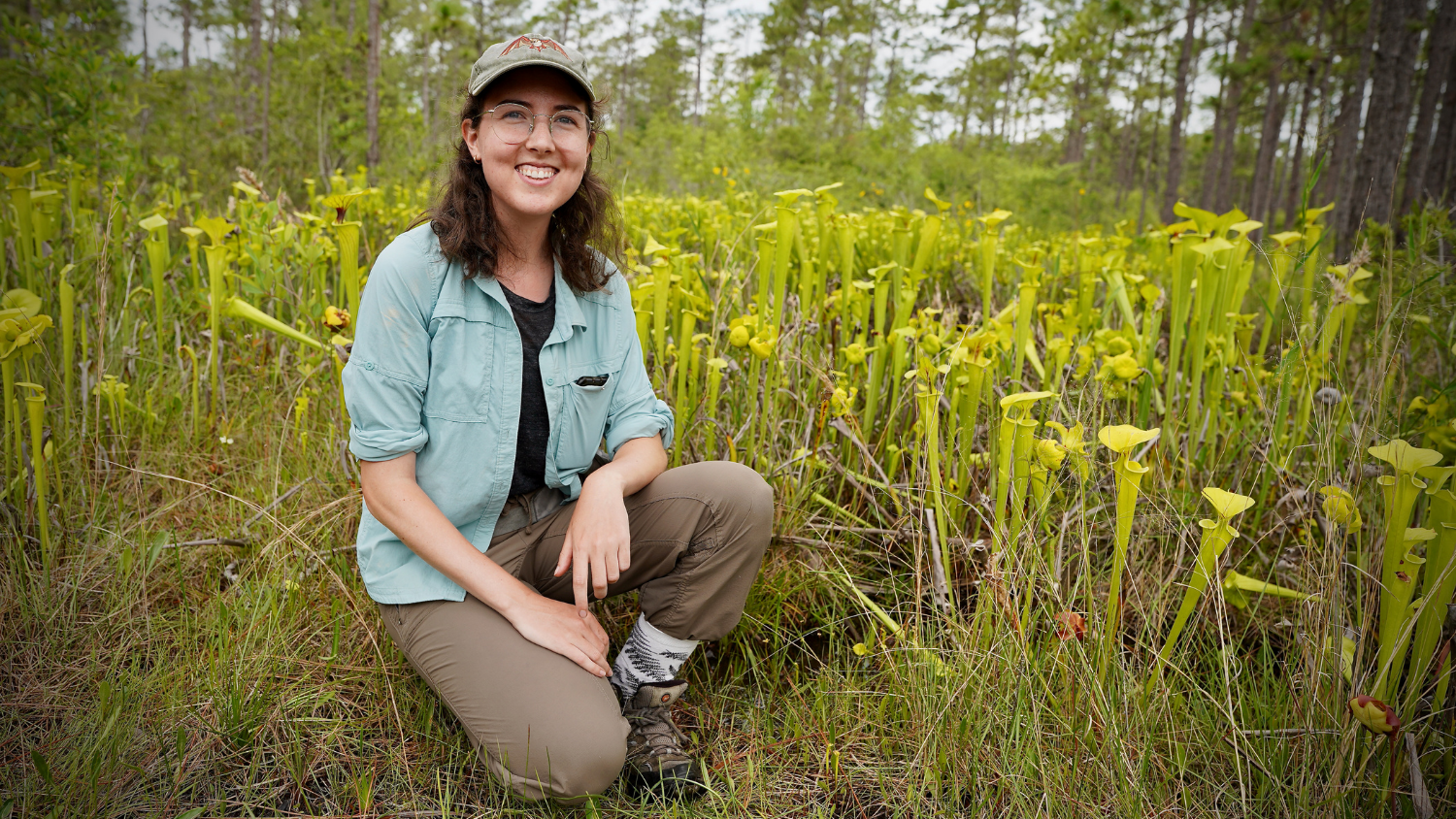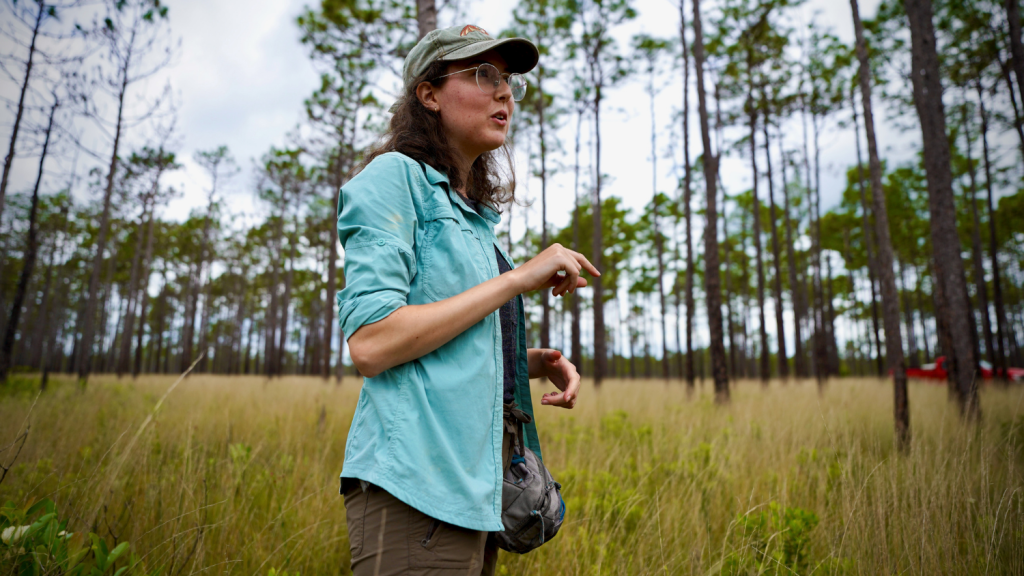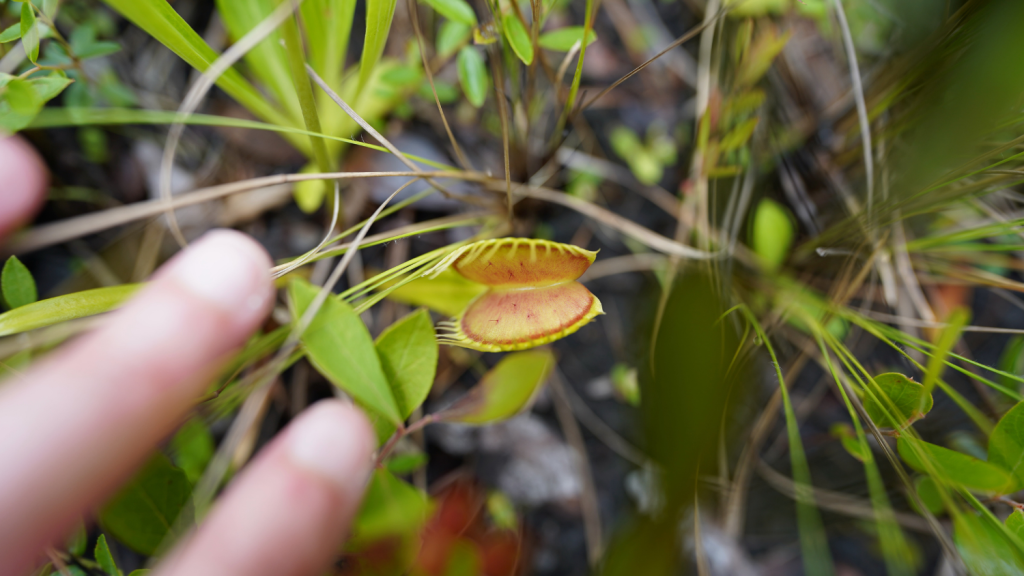
Written by: Juliana McCully
A chance opportunity to work with the Venus flytrap became a turning point for Laurie Hamon’s doctoral journey, and the focus of her dissertation for a Ph.D. in entomology and biology.
The aha-moment married a cherished undergraduate experience with a native North Carolina treasure and the realization her interests could be a career.
“When I was a junior, I took a class that included a field trip to the longleaf pine savanna, where flytraps grow,” Hamon said. “And even though I’ve lived in North Carolina nearly my whole life, I had no idea this habitat existed. I thought it was bonkers and weird, and I loved it! That was a turning point for me when I realized I would love to study ecology.”
The memory sprang to mind when she approached her current co-advisor, professor Becky Irwin, about a study in her lab. Irwin said there wasn’t funding for a new student on that project, but asked if she would be interested in working on the pollination ecology of the Venus flytrap.
“The flytrap opportunity was way more interesting than what I originally had in mind,” Hamon said. “The main reason I’m at NC State is because I loved the project. I loved the labs. And I loved the area.”
Can you describe your journey to NC State?
I was a biology major, and my original plan was to go to vet school, which I think is the case for a lot of people who like non-human organisms but aren’t sure what to do with that interest. I started working in research labs and realized I was more interested in research than in vet school. As part of a lab studying caterpillars and climate change, I helped start a citizen science project monitoring butterflies at Mason Farm Biological Preserve, so I knew I was interested in insects and, specifically, plant-insect interactions.
Can you tell us about your doctoral research with Venus flytraps?
I’m interested in the importance of pollinators to the reproduction of the Venus flytrap. The flytrap, which is only natively found in North Carolina and a little bit of South Carolina, is rare in the wild and threatened by fire suppression, land-use change and poaching.
Until recently, we didn’t really know much about who pollinates it and whether that’s important for longevity and conservation. We were looking to see if seed-set was limited by pollen receipt to the flower, look at which pollinators are most efficient, compare the importance of insects as food versus insects as pollinators, and determine the overall importance of insects to flytrap reproduction.

We’ve learned the flytrap is pollen-limited, which means the number of seeds it produces is reduced when the amount of pollen it receives is reduced. This is potentially troubling and could have conservation implications. And while my research hasn’t looked specifically at climate change, one potentially interesting chapter of my thesis looks at the numbers of flytraps.
I worked part-time for the Natural Heritage Program, which is a state agency that tracks rare species. The Venus flytrap is a candidate for listing under the Endangered Species Act, so the Fish and Wildlife Service commissioned a status survey to determine how many Venus Flytraps there are, and where they are.
In total, there are about 800,000 Venus Flytraps natively in North and South Carolina, and most of them are on protected lands. But what may be most pressing is that the bulk represents just a few populations.
There are nine or 10 populations comprising most of that 800,000, and 50 or so much smaller populations, many of which are on unprotected or private land that is at risk of being snuffed out by poaching or collection; inefficient fire management or overgrowth; or conversion to agriculture, timber, and residential areas. We’re concerned about the smaller populations and potentially losing that genetic diversity.

At the time of the survey, there was also a significant drought, so a lot of plants were dormant. Anything that affects the frequency of extreme events could have repercussions for the flytrap and other co-occurring species in its habitat, such as orchids and other carnivorous plants.
The pine savanna habitat is one of the most biodiverse places on this side of the country, and these habitats have shrunk to single-digit percentages of their original range.
What were the challenges and rewards of your doctoral research?
My project is mostly fieldwork, and it’s noted for being a tough environment – very exposed, hot, humid, and full of ticks and bugs. I found it to be physically challenging, and I was out there for 5-10 weeks at a time. I came away feeling like, if I can do that, I can do other tough things and feel a little more confident about tackling future challenges in the field.
A surprising aspect has been the bond I’ve had with my lab mates, peers and my departments. There are lots of opportunities at NC State. I can go out and find someone who’s doing something interesting and collaborate – it’s a good playground for bug and plant people like me.
I didn’t expect to be working with Venus flytraps for five years, and it’s been enormously rewarding. It’s become part of my identity. It’ll probably follow me after I graduate, and I’m just so grateful to have stumbled into something like this.
What advice do you have for students seeking their path?
When I was an undergraduate, I was anxious a lot because these opportunities would come up to join a lab or do an internship, and I thought every decision was make-or-break for my possible career. So, just be open-minded about the opportunities that come your way and try not to stress too much!

I also tell undergrads to make sure they feel respected. Additionally, I think they should be paid and supported, so I encourage them to ask for compensation and apply for funding. It’s important because it opens the path for people who might come from backgrounds where they can’t possibly take an unpaid internship.
I’m quick to point out that I get paid, which is bizarre to me. I get paid to look at flytraps and catch bugs — to do what I love!
What’s next for you?
I’m currently on the job hunt but would love to keep going on the plant/insect interactions front, especially from a conservation perspective. I’m especially interested in jobs related to natural resource management.
I’ll be doing insect surveys part-time for the Natural Heritage Programs through most of the summer. I’m also interested in postdoc opportunities related to pollination ecology and the conservation of rare plants.
Title of Thesis: The pollination ecology of the Venus flytrap (Dionaea muscipula) and a status survey of its native populations
This post was originally published in College of Agriculture and Life Sciences News.